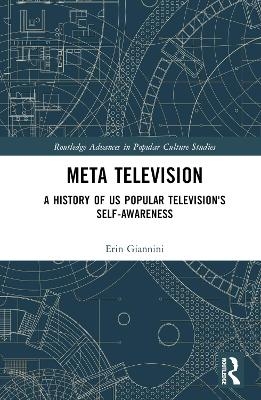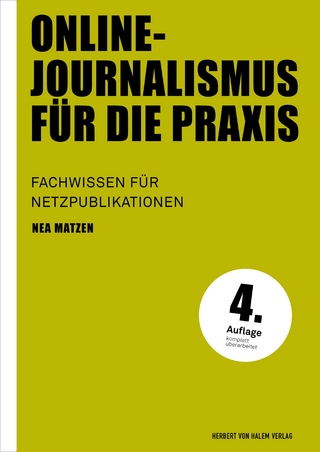
Meta Television
Routledge (Verlag)
978-1-032-36634-0 (ISBN)
The idea of metatextuality is frequently framed as a recent television development and often paired with the idea that it represents genre exhaustion. US television, however, with its early “live” performances and set-bound sitcoms, always suggested an element of self-awareness that easily shaded into metatextuality even in its earliest days. Meta Television thus traces the general history of US television’s metatextuality throughout television’s history, arguing that TV’s self-awareness is nothing new—and certainly not evidence of a period of aesthetic exhaustion—but instead is woven into both its past and present practice, elucidated through case studies featuring series from the 1970s to the present day—many of which have not been critically analyzed before—and the various ways they deploy metatext to both construct and deconstruct their narratives. Further, Meta Television asserts that this re- and de-construction of narrative and production isn’t just a reward to the savvy and/or knowledgeable viewer (or consumer), but seeks to make broader points about the media we consume—and how we consume it.
This book explores the ways in which the current metatextual turn, in both the usual genres in which it appears (horror and sci-fi/fantasy) and its movement into drama and sitcom, represents the next turn in television’s inherent self-awareness. It traces this element throughout television’s history, growing from the more modest reflexivity of programs’ awareness of themselves, as created objects in a particular medium, to the more significant breaking of the fictive illusion and therefore the perceived distance between the audience and the series. Erin Giannini shows how the increased currency of metatextual television in the contemporary era can be tied to a viewership well-versed in its stories and production as well as able and willing to “talk back” via social media. If television reflects culture to a certain extent, this increased reflexivity mirrors that “responsive” audience as a consequence of the lack of distance that metafiction embraces.
As Robert Stam traced the use—and implications—of reflexivity in film and literature, this book does the same for television, further problematizing John Ellis’s glance theory in terms of both production and spectatorship.
Erin Giannini, PhD, is an independent scholar, and author of Supernatural: A History of Television’s Unearthly Road Trip and The Good Place, as well as co-editor of the book series B-TV: Television Under the Critical Radar for Bloomsbury.
Introduction: Exploiting TV’s TV-ness, or isn’t television weird? Part I: Facets of meta television 1. “Like there were only three walls, not a fourth one”: Addressing the world outside the TV 2. “That’s fake me!”: Shows about shows Part II: Deep dives: Defining shows 3. Soap’s parody of soap opera’s dramatic excesses 4. “Tonight, broadcasting takes a giant leap...backwards”: Moonlighting’s comedy noir 5. Life isn’t a John Hughes Film: Parker Lewis Can’t Lose, film, and surveillance 6. Whose story is it? Roseanne, Supernatural, and the writer as God 7. “Abed, stop being meta”: Community deconstructs TV tropes 8. “In one indescribable instant”: Crazy Ex-Girlfriend’s rom-com-musical deconstruction 9. “Teachers at a school like Abbott...we have to be able to do it all”: Meta as pedagogy in Abbott Elementary Conclusion “The audience might just see through this little charade”: WandaVision and when meta TV goes streaming
| Erscheinungsdatum | 20.03.2024 |
|---|---|
| Reihe/Serie | Routledge Advances in Popular Culture Studies |
| Verlagsort | London |
| Sprache | englisch |
| Maße | 156 x 234 mm |
| Gewicht | 460 g |
| Themenwelt | Kunst / Musik / Theater ► Film / TV |
| Geisteswissenschaften ► Geschichte | |
| Sozialwissenschaften ► Kommunikation / Medien ► Journalistik | |
| Sozialwissenschaften ► Kommunikation / Medien ► Medienwissenschaft | |
| ISBN-10 | 1-032-36634-6 / 1032366346 |
| ISBN-13 | 978-1-032-36634-0 / 9781032366340 |
| Zustand | Neuware |
| Informationen gemäß Produktsicherheitsverordnung (GPSR) | |
| Haben Sie eine Frage zum Produkt? |
aus dem Bereich


